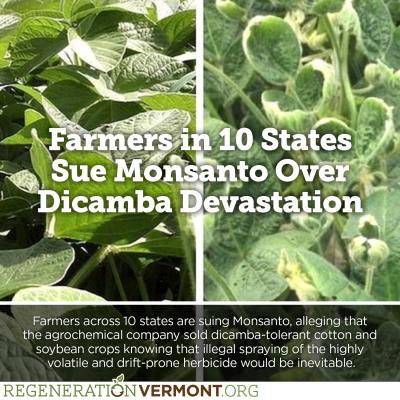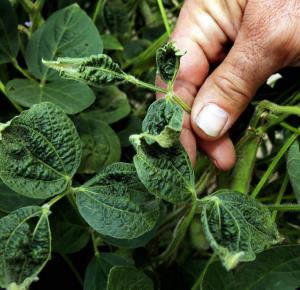Dicamba Emerges as an Environmental and Legal Liability for Monsanto and Bayer
|
12/14/2020 |
|
 Reeling from expensive claims alleging carcinogenicity of glyphosate the active ingredient in RoundUp™, Bayer is now facing extensive liability as a result of damage caused by the application of Dicamba, a chlorphenoxy herbicide. Bayer acquired Monsanto in 2018 with Dicamba marketed in various formulations since 2015. The compound was developed jointly with BASF and marketed in response to weeds developing resistance to glyphosate. Accordingly, cotton and soybean cultivars resistant to both glyphosate and Dicamba were developed. Reeling from expensive claims alleging carcinogenicity of glyphosate the active ingredient in RoundUp™, Bayer is now facing extensive liability as a result of damage caused by the application of Dicamba, a chlorphenoxy herbicide. Bayer acquired Monsanto in 2018 with Dicamba marketed in various formulations since 2015. The compound was developed jointly with BASF and marketed in response to weeds developing resistance to glyphosate. Accordingly, cotton and soybean cultivars resistant to both glyphosate and Dicamba were developed.
On December 4th Jonathan Hettinger, affiliated with the Midway Center for Investigative Reporting published and exposé of the Dicamba situation. The article confirmed that Dicamba will damage or destroy non-resistant crops by both drift after application and by volatilization, a second and more serious mechanism. Dicamba can persist in the air over a treated field for hours and can spread for as much as two miles depending on atmospheric conditions.
By 2018, approximately forty percent of all soybeans planted in the U.S. were genetically modified to withstand both RoundUp™ and Dicamba. By the following year seventy percent of cotton planted was genetically modified to withstand both herbicides. The problem arises with non-resistant cotton and soybean seeds and other crops that have not be subjected to genetic modification. A number of cases have appeared before the courts resulting in jury verdicts awarding both direct and punitive damages. Damage has been caused to orchards and soybean fields including non-GMO certified organic crops susceptible to Dicamba.
|
|

Dicamba damage to non-resistant soybean plant
|
Internal Monsanto and BASF memorandums discovered in the process of litigation indicate that scientists and managers at Monsanto were aware of the risks associated with the compound. It is evident that EPA has been complicit in approving and reapproving Dicamba through 2020 despite cautions from independent agronomists and those at Land-Grant institutions and Agency scientists. One of the allegations raised is that Monsanto deliberately re-worded the statutory labels specifying restrictions on use to shift responsibility for damage from the company to individual farmers and commercial applicators of Dicamba. |
| The conclusions from the Hettinger article are that Monsanto and BASF released Dicamba in various formulations knowing that damage to nonresistant soybean and cotton crops would occur. Hettinger alleges that Monsanto conducted testing to generate data that would expedite EPA approval but the company failed to disclose potential problems relating to drift and volatilization. It is alleged that field investigations of damage to non-resistant crops were conducted in a manner intended to exculpate Monsanto and to limit compensation to farmers. |

|
|
|